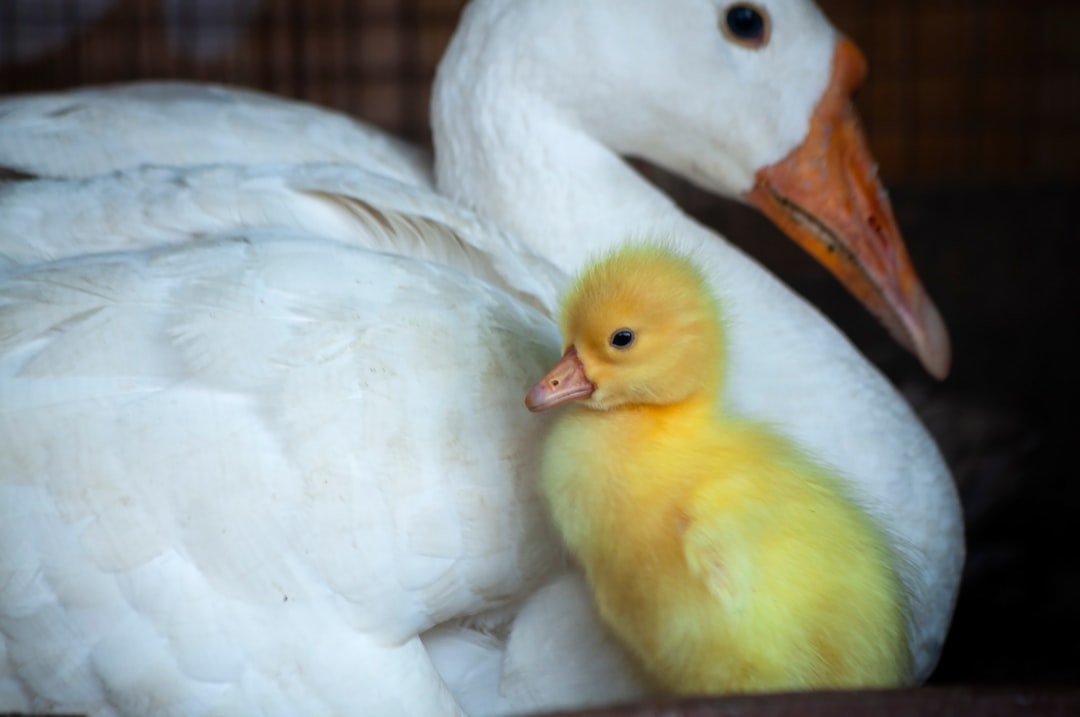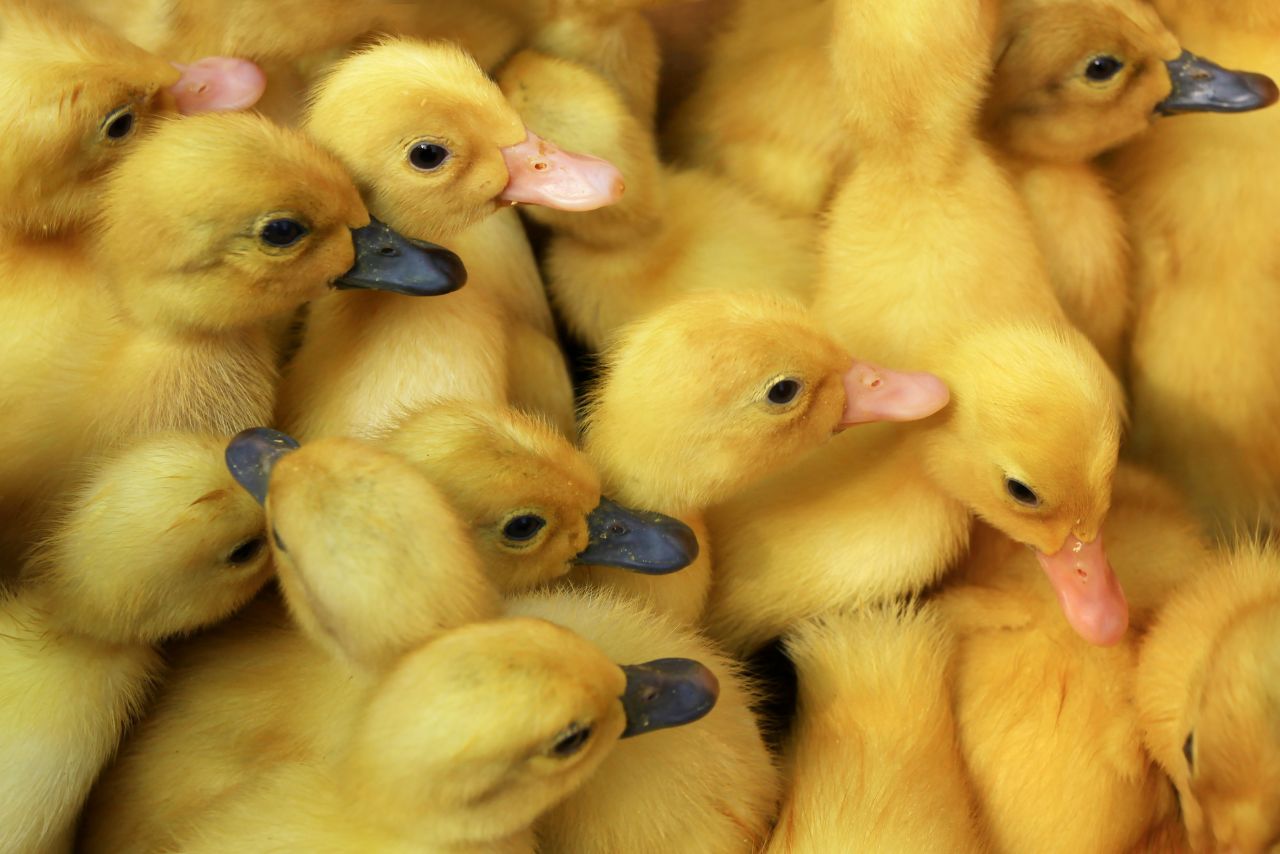“Are All Ducklings Yellow?” is a question that often comes to mind when we think of ducks. Many of us have grown up with the idea that all ducklings are yellow and fluffy. But is this really the case?
No, not all ducklings are yellow. Ducklings come in a variety of colors and patterns, not just yellow. Some common colors include brown, black, and gray. The color of a duckling depends on the breed and genetics of the parents.
In this blog post, we will explore the different colors and patterns that ducklings can have, and the reasons behind their variations.
Whether you’re a fan of ducks or just curious about the world around you, this post will provide you with fascinating insights into the world of these adorable waterfowl.
Are All Ducklings Yellow?
No, not all ducklings are yellow. In fact, only a small percentage of ducklings are yellow. The most common colors for ducklings are brown and white. Some other colors that ducklings can be include black, gray, and green.
The color of a duckling is determined by its breed. For example, Pekin ducks are always yellow, while mallard ducklings are usually brown with black stripes.
Here are some of the breeds of ducks that have yellow ducklings:
- American Pekin
- Call duck
- Indian Runner
- Rouen duck
- Swedish Blue
If you see a duckling that is not yellow, it doesn’t mean that it’s not a duckling. There are many different breeds of ducks, and they come in all sorts of colors.
Why Are Ducklings Yellow?
Ducks have patterns or markings on their feathers, such as stripes or spots. These patterns can also vary based on the breed and genetics.
So why are yellow ducklings so common? It’s because of a pigment called “xanthophylls”, which is found in the egg yolk. Most duck breeds have this pigment in their eggs, which gives the duckling its yellow color when it hatches.
Specific Breeds With Yellow Ducklings
Some breeds of ducks, such as the “Pekin” and the “Rouen”, are known for their yellow ducklings.
These breeds have been selectively bred to produce a higher amount of xanthophylls in their eggs, resulting in a more consistent yellow coloration of their offspring.
However, it’s worth noting that even within these breeds, there can still be variations in shades and patterns.
Are Wild Ducklings Yellow?
Some wild ducklings can be yellow, it’s not as common as in domesticated breeds. Wild ducklings tend to have more subdued colors like brown and gray, which help them blend into their natural surroundings and avoid predators.
There are exceptions to this rule. For example, the Mandarin duck is a species of wild duck that has strikingly colorful plumage, including bright yellow and orange on its face.
What Causes Ducks to Turn Yellow When They Are Born?

Yellow ducklings are born with a layer of down feathers that eventually molt away and are replaced by adult plumage. The yellow color of their down feathers is not permanent, but it does provide a form of camouflage in nature.
When they are born, ducklings need to blend in with their surroundings to avoid predators. Yellow is a common color in many natural environments, making yellow ducklings less noticeable and increasing their chances of survival.
In some cases, breeders may also selectively breed ducks for certain colors or patterns. This has resulted in a wide range of unique and beautiful variations among domesticated duck breeds.
Is There Any Chemical That Causes Ducklings To Change Their Color?
There is no chemical that causes ducklings to change their color. As they grow, their down feathers molt away and are replaced by adult plumage, which can be a different color than their original down feathers.
This is a natural process that occurs as the duckling matures into an adult bird.
It’s also worth noting that some domesticated duck breeds have been selectively bred for certain colors or patterns over time.
This is done by choosing ducks with desirable traits and breeding them together to produce offspring with those traits. As a result, there are now many unique and beautiful variations among domesticated duck breeds.
How Long do Ducklings Stay Yellow?

The yellow color of a duckling’s down feathers is not permanent. As they grow, their down feathers will molt away and be replaced by adult plumage, which can be a different color than their original feathers.
This transition usually starts at around 2-3 months old and can take several weeks to complete.
Different breeds of ducks mature at different rates, so the length of time that ducklings stay yellow can vary. Some breeds may retain their yellow color for a shorter period, while others may keep it for longer.
How The Color Is Related To Their Survival Of Ducks?
The color of ducks, including ducklings, is related to their survival in the wild. As mentioned earlier, yellow down feathers provide a form of camouflage for ducklings, making it easier for them to blend in and avoid predators.
This is especially important during their vulnerable early stages of life. Adult plumage can also provide camouflage depending on the environment in which the ducks live.
Can Yellow Ducklings Fly?
Yellow ducklings, like all ducklings, are not able to fly immediately after hatching. They require a period of time to grow and develop their flight feathers before they can take to the air.
The exact amount of time it takes for a duckling to learn how to fly varies depending on the breed and individual growth rate. However, most ducks typically start learning to fly between 2-3 months old.
How Quickly Do Yellow Ducklings Grow?
The growth rate of ducklings depends on various factors such as breed, diet, and environment.
On average, ducklings can grow up to 10 times their initial size in just a few weeks! In fact, some breeds can reach their full adult size within just a few months.
During the first week, ducklings will double in size and weight. By the end of the second week, they will have grown to three times their original size.
From there on, their growth rate will slow down but they will continue to gain weight and develop strong wings for flight.
Factors That Affect Yellow Ducklings Growth
Factors that affect the growth of ducklings include their diet, environment, and genetics. A balanced diet with sufficient protein is crucial for healthy growth and development.
The environment should be clean and spacious enough to allow for exercise and socialization. Genetics also play a role in determining the potential size and growth rate of each individual duckling.
It’s important to monitor the growth of ducklings closely to ensure that they are growing at a healthy rate and not experiencing any health issues. Any abnormalities or concerns should be addressed immediately by a veterinarian or experienced poultry keeper.
At What Age Do Ducklings Lay Eggs?
Ducklings do not lay eggs. They are too young to reproduce and will need to mature into adult ducks before they can start laying eggs.
The age at which ducks begin laying eggs varies depending on the breed and individual factors such as diet and environment. On average, most ducks begin laying eggs between 4-7 months of age.
It’s important to provide ducks with a suitable nesting area and proper nutrition during their egg-laying period. This will help ensure that they are able to produce healthy eggs and maintain good health overall.
Watch Video: Are All Ducklings Yellow?
Conclusion! Are All Ducklings Yellow?
It is a joy to observe the growth and development of ducklings as they transform from cute little fluff balls into majestic adult ducks.
Providing them with proper nutrition, a suitable environment, and attentive care is crucial for their healthy growth and well-being.
It’s also important to remember that while ducklings may not be able to fly right away, they will eventually learn and become skilled fliers. As for their egg-laying abilities, this is a process that requires time and maturity.
Overall, raising ducklings can be a rewarding experience that allows us to appreciate the wonders of nature and the beauty of animal life.
With patience and dedication, we can help these little creatures reach their full potential and thrive in our farms and backyards.
FAQs
Are All Ducklings Yellow?
No, not all ducklings are yellow. While many breeds of ducks do hatch with yellow feathers, some can have brown, black, or even striped feathers.
Why Are Most Ducklings Yellow?
The yellow color of ducklings is due to a pigment called xanthophylls that they get from their diet while still in the egg.
This pigment is also responsible for the orange color of egg yolks.
How Long Do Ducklings Stay Yellow?
The yellow down of ducklings will begin to molt and be replaced by adult feathers at around 6-8 weeks old in most breeds.
Will a White Duckling Turn Yellow as It Grows Up?
No, white ducklings will remain white as they grow into adulthood.
Can You Tell the Sex of A Duckling by Its Color?
No, the color of a duckling does not indicate its gender.
To determine the sex of a duckling, you need to wait until it reaches sexual maturity and shows physical characteristics such as male ducks having curly tail feathers or females having a more prominent “quack.”




